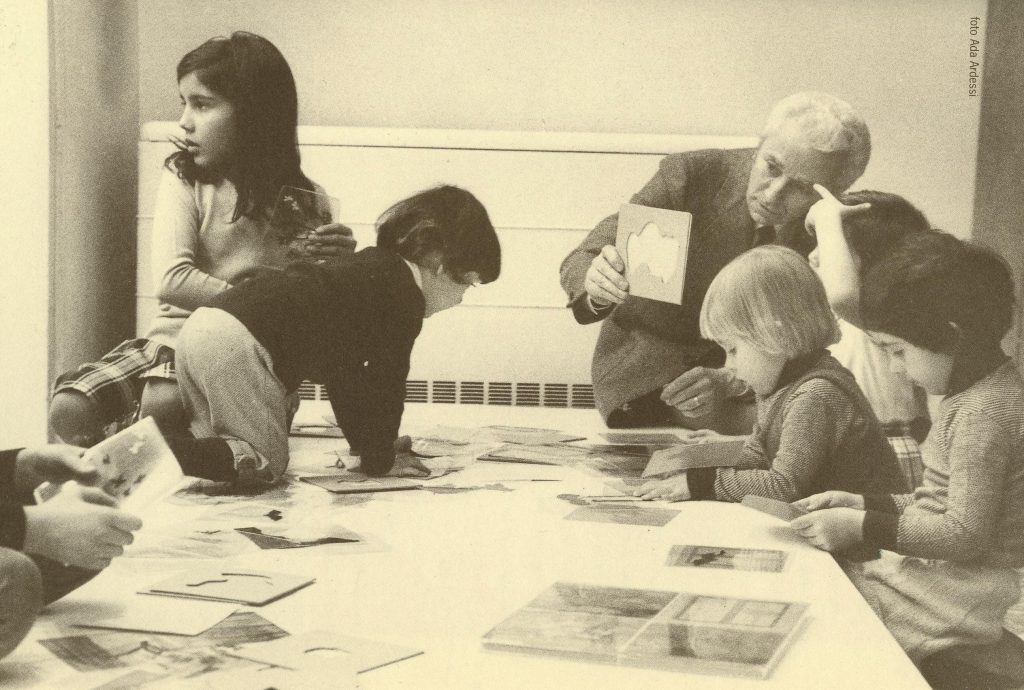“Our vision is a world where people think for themselves and can confidently ask questions, answer questions and understand the world around them.” The Exploratorium
“Asking questions to children provides them with an opportunity to think and use language in a functional manner by allowing them to report observations, describe experiences and make predictions.” Ramsey & Fowler (2004)

How parents talk to children can greatly influence how and what they learn. This can then shape, or restrict, children’s creativity.
Asking children questions is a great way for parents to find out further information on what their child is doing (Allen, 1990). Questions can also be used to:
- Encourage children to reflect on something from different perspectives
- Direct attention to a particular issue
- Stimulate curiosity and excitement around an activity
- And encourage self-reflection.
Taken from MacNaughton & Williams (2009)
Overall, questions can support creativity when they encourage new and innovative ways for children to learn .
Closed vs. Open-Ended Questions
There are two different types of questions: closed and open.
Closed questions require a ‘yes’ or ‘no’ answer. These can be useful if a simple piece of factual information is needed to assess a child’s current level of understanding or interest. For example, ‘can you point to the colour yellow?’ Or ‘would you like to play outside?’
However, closed questions become limited when trying to push children’s learning beyond what they already know. If only closed questions are used in a conversation with children, they become bored. This is when open-ended questions can be useful.
Open-ended questions differ from closed questions in that there is no right or wrong response (MacNaughton & Williams, 2009). Children may respond to open questions in many different ways depending on what they know, think and feel.
Open-ended questions may also provoke children to re-think their previous ideas and actions. For example, ‘what do you think would happen if we added water to the clay?’ Or ‘how could we change the colour of the green paint?’ These questions do not require a single response and allow children to make a decision on how they would like to answer.
Tips for using questions at home with children
Both closed and open questions can be used at home. Below are a few practical examples:
- To reflect on a previous activity. If you are asking a question about an activity that happened in the past, you could describe the event to re-cap children’s memory first. Then ask an open-ended question. For example, “Today we went to the park. When we were there, we collected the rocks and arranged them into a circle. Then we saw that there were lots of leaves on the ground and that there were no leaves in the trees. Why were the leaves on the ground?”
- To direct attention to a specific issue. For example, if you are making a cubby house and the sheet keeps falling down, you could ask “how could we get this sheet to stay up?” This question could encourage problem-solving while focusing the child’s attention to the specific issue.
- To deepen children’s aesthetic awareness. For example, if you are visiting an art museum, you may ask a child a question to deepen their engagement with an artwork such as, “What else does this artwork look, sound or feel like?” or “Why do you think it is moving in that way?”
- To create excitement or curiosity around something. For example, when undertaking a new activity that children may be unfamiliar with.
Tips for using questions to support children’s creativity
- Ask one question at a time.
- Give children time to think and consider their response.
- Consider the child’s developmental stage before formulating the words of a question. For example, children under the age of two may have very limited vocabulary so questions that involve a one-word response may work best.
- Use simple and clear language. If a child does not answer a question, try asking it in a different way as they may not have understood you.
- If the child does not want to answer the question, this could be for many different reasons and not necessarily because they are being difficult. For example, they may hesitate to respond if they think it will offend someone or they simply may not know the answer.
If you have got any further tips for using questions at home, please share them below!
References
Allen, R (ed) 1990. The Concise Oxford Dictionary of Current English,Oxford: Clarendon Press.
MacNaughton, G & Williams, G (2009). Teaching young children: Choices in theory and practice. Second edition. Maidenhead: Open University Press (NB: I HIGHLY recommend this book. It has so many wonderful tips to help educators support children’s learning. Some of the tips above have come from it.The book has been written for early childhood teachers but is very useful for parents. It is written in very clear and simple English with lots of practical examples. Get into it!)
Ramsey, J & Fowler, M (2004). “What do you notice? Using posters containing questions and general instructions to guide preschoolers’ science and mathematics learning’, Early Childhood Development and Care, 174(1), p.31-45.
Related Posts on Children’s Creativity
Tips for supporting children’s creativity at home. A post for parents!
3 tips for scaffolding children’s play with materials
Demonstrating as a way of supporting children’s creativity
The original version of this post was published in June, 2017.
1 Comment